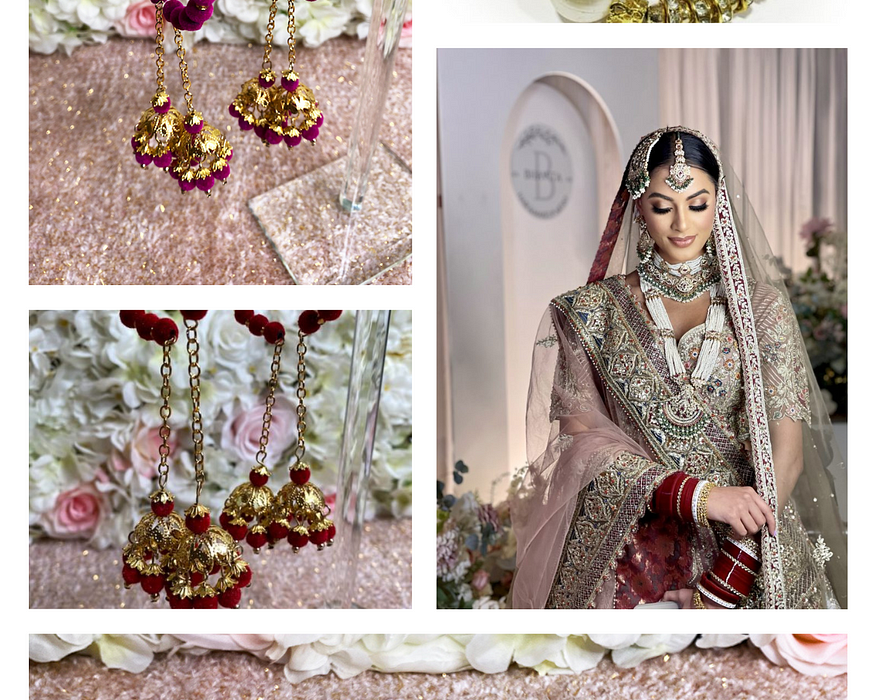Introduction
Sikh weddings are renowned for their vibrant colors, rich traditions, and deeply rooted cultural significance. Central to these celebrations are the stunning sikh wedding planning that not only enhance the visual spectacle but also carry symbolic meanings. In this comprehensive guide, we will delve into the myriad of Sikh wedding accessories, exploring their significance, variations, and the traditions that surround them. From the bride’s intricate jewelry to the groom’s regal turban, each accessory tells a story and plays a vital role in the Sikh wedding ceremony.
The Bride’s Adornments
Chooda and Kalire:
- Chooda: The chooda is a set of red and white bangles worn by the bride. Traditionally, the bride’s maternal uncle places the chooda on her wrists, signifying marital bliss and prosperity. These bangles are often adorned with intricate designs and sometimes embellished with gold or silver accents.
- Kalire: Attached to the chooda are the kalire, which are umbrella-shaped ornaments that dangle from the bride’s bangles. They symbolize the bride’s prosperity and happiness. During the wedding festivities, it’s customary for the bride to shake her kalire over the heads of unmarried girls. If a piece falls off, it’s believed that the girl will soon get married.
Maang Tikka and Matha Patti:
- Maang Tikka: This is a forehead accessory that rests on the parting of the bride’s hair. It’s often crafted with precious stones and intricate designs, symbolizing the bride’s third eye or wisdom.
- Matha Patti: An elaborate version of the maang tikka, the matha patti extends across the forehead and is usually attached to the hair on either side. It adds an extra layer of opulence and is often chosen to complement the bride’s overall look.
- Nath (Nose Ring):The nath is a traditional nose ring, often a large hoop with a chain that extends to the hair or ear. It is a symbol of the bride’s innocence and purity and is usually adorned with pearls, diamonds, or other precious stones.
- Rani Haar and Necklace Sets:The rani haar is a long, regal necklace that adds a touch of grandeur to the bride’s attire. It is usually paired with shorter necklace sets to create a layered look. These necklaces are often intricately designed with gold, kundan, or polki stones.
Payal and Bichuas (Anklets and Toe Rings):
- Payal are anklets that produce a melodious sound as the bride walks, symbolizing her presence and arrival. Bichuas, or toe rings, are traditionally worn by married women and symbolize marital status and well-being.
- Sehra:The sehra is a decorative veil of flowers or beads that is tied around the groom’s turban. It covers his face and is believed to ward off the evil eye. The sehra ceremony is an emotional moment, marking the groom’s transition into married life
- Sherwani and Accessories: The sherwani is a traditional long coat worn by the groom. It is usually richly embroidered and paired with churidar pants or a dhoti. Accessories such as a brooch, mala (necklace), and cummerbund (waist sash) are added to enhance the groom’s attire.
- Sword (Kirpan):The kirpan is a ceremonial sword carried by the groom. It is a symbol of bravery and the Sikh duty to protect. The kirpan is often decorated with intricate designs and is worn with pride.
Shared Accessories and Customs
Phulkari Dupatta:
- Phulkari is a traditional Punjabi embroidery technique, and a phulkari dupatta is a large, embroidered scarf that plays a crucial role in Sikh weddings. The bride often covers her head with the phulkari dupatta during the ceremony, and it is sometimes used to drape both the bride and groom together, symbolizing their union.
- Jaimalas (Garlands):During the wedding ceremony, the bride and groom exchange jaimalas, which are garlands made of fresh flowers. This exchange symbolizes mutual respect and acceptance of each other as life partners.
- Kara:The kara is a steel or iron bracelet worn by both the bride and groom. It is one of the five articles of faith for Sikhs and symbolizes eternity, strength, and unity with God.
- Chunni Ceremony: In this pre-wedding ritual, the groom’s family visits the bride’s home to gift her a chunni (veil), symbolizing acceptance and welcome into their family. The bride’s mother-in-law often places the chunni over the bride’s head, accompanied by blessings and gifts.
The Significance of Colors
In Wedding accessories uk, colors play a vital role in expressing emotions and cultural values. Red, gold, and maroon are dominant colors, symbolizing prosperity, joy, and tradition. The bride’s attire is typically vibrant and embellished, reflecting her new journey. The groom’s attire, while also colorful, is designed to complement the bride’s, creating a harmonious and visually stunning pair.
- Modern Trends and Innovations: While tradition holds a significant place, modern Sikh weddings have embraced contemporary trends and innovations. Brides and grooms now blend traditional accessories with modern aesthetics to create unique, personalized looks.
- Fusion Jewelry: Modern brides often incorporate fusion jewelry, blending traditional designs with contemporary styles. This includes pieces that mix gold with diamonds or other precious stones, creating a look that is both timeless and modern.
- Customization: Custom-made accessories are increasingly popular. Brides and grooms work with designers to create bespoke pieces that reflect their personal style and family heritage.
- Eco-Friendly Choices: With growing awareness of sustainability, many couples opt for eco-friendly accessories. This includes using ethically sourced materials, recycled metals, and biodegradable packaging.
Conclusion
Sikh wedding accessories are more than just adornments; they are steeped in tradition, culture, and symbolism. From the intricate jewelry of the bride to the regal attire of the groom, each accessory plays a crucial role in the ceremony, enhancing the beauty and significance of the occasion. As we celebrate the fusion of tradition and modernity, these accessories continue to evolve, reflecting the timeless elegance and cultural richness of Sikh weddings. Whether steeped in tradition or embracing contemporary trends, Sikh wedding accessories remain a vital part of the joyous celebration, embodying the love, honor, and unity that define this sacred union.










